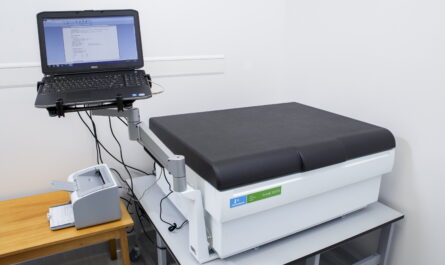Introduction
Smoking is one of the leading preventable causes of death worldwide. Though in recent years awareness about the harmful effects of smoking has increased dramatically, millions still struggle with nicotine addiction. Quitting smoking can significantly reduce health risks and improve quality of life. In this article, we examine the various nicotine de-addiction products available to help smokers kick the habit for good.
Nicotine Replacement Therapies
Nicotine replacement therapies (NRTs) deliver nicotine to the body in a controlled manner to help reduce withdrawal symptoms during cessation. Some common Smoking Cessation and Nicotine De-addiction options include:
Nicotine Patches: Nicotine patches are adhered to the skin and release nicotine slowly into the bloodstream over 16-24 hours. This provides a consistent nicotine level to ease cravings. Patches are available in various doses and should be used for up to 10 weeks as per a tapering schedule.
Nicotine Gums & Lozenges: Nicotine gums and lozenges are used orally and can be used on an as-needed basis throughout the day to curb cravings. They work faster than patches but still deliver nicotine at a controlled rate. Users are advised to “park and click” between cheek and gum to maximize nicotine absorption.
Nicotine Inhalers & Sprays: Nicotine inhalers resemble asthma inhalers and deliver vaporized nicotine through the oral mucosa. Nicotine nasal sprays work in a similar way through the nasal passages. Both act faster than other NRTs to satisfy an acute craving within minutes.
Combination NRT: Using different forms of NRT together, such as a patch plus a gum or lozenge, may increase success rates since they address both constant and acute nicotine needs. However, exceeding the recommended daily nicotine intake can cause side effects.
Effectiveness of Nicotine Replacement Therapies
Various clinical trials have proven NRTs to be effective smoking cessation aids when used as directed for the recommended duration. Even though they do not deliver the same level of nicotine as cigarettes, they almost double the chances of successfully quitting long-term. Some key points about NRT effectiveness:
– Use for full recommended duration of 8-12 weeks for maximum benefits. Short-term use provides little long-term quitting advantage.
– Combination NRT regimens are superior to single NRT. Using patch plus a fast-acting form addresses both tonic and acute nicotine needs.
– Using NRT along with behavioral counseling or smartphone apps further boosts success rates compared to unassisted quit attempts.
– Those with higher nicotine dependence or who smoke within 30 minutes of waking are likely to require combination NRT or additional support.
– While not risk-free, NRTs are far safer than smoking and help transition away from smoked nicotine delivery.
Prescription Medications for Cessation
For smokers who have relapsed using NRT or prefer a non-nicotine option, prescription medications can double or triple long-term quit rates:
Bupropion (Zyban): Available as sustained-release tablets, bupropion is a non-nicotine medicinal therapy that acts on the brain to reduce nicotine cravings and withdrawal symptoms. It must be started 1-2 weeks before the quit date.
Varenicline (Chantix): As one of the most effective smoking cessation medications available, varenicline works by binding to nicotine receptors in the brain to reduce craving and relapse. It is usually taken for 12-24 weeks starting 1 week before the target quit date.
Both medications have demonstrated long-term abstinence rates as high as 30% compared to 10-15% for unassisted quit attempts. However, they can cause mild side effects in some users. Close medical supervision is recommended when using prescription cessation aids.
Alternative Therapies & Lifestyle Factors
While NRT and medication significantly boost quit rates, some smokers may prefer alternative therapies alone or in addition to medication:
– Hypnotherapy and acupuncture have shown limited effectiveness in helping people successfully quit smoking but may provide additional support.
– Electronic cigarettes or vaping products can potentially substitute the behavioral and hand-to-mouth aspects of smoking but are not approved as cessation aids and their long-term safety is still being researched.
– Exercise, relaxation techniques, and avoiding smoking triggers or routines also play a role. Identifying high-risk situations in advance and developing coping strategies is key.
– Social support from friends and family members who do not smoke and holding each other accountable can boost motivation to stay smoke-free.
Overall, combining medication, NRT, behavioral counseling/support, and lifestyle changes provides the best odds of long-term smoking cessation success. Quitting takes time and perseverance, but the health benefits are well worth it.
While smoking cessation is a challenging process, nicotine de-addiction products along with alternative therapies have greatly improved quit rates over the past few decades. Individualizing the plan using both pharmacological and behavioral interventions leads to higher long-term abstinence. Despite potential setbacks, staying motivated and having a strong support system will help smokers kick the habit and live healthier smoke-free lives.
*Note:
1. Source: Coherent Market Insights, Public sources, Desk research
2. We have leveraged AI tools to mine information and compile it


